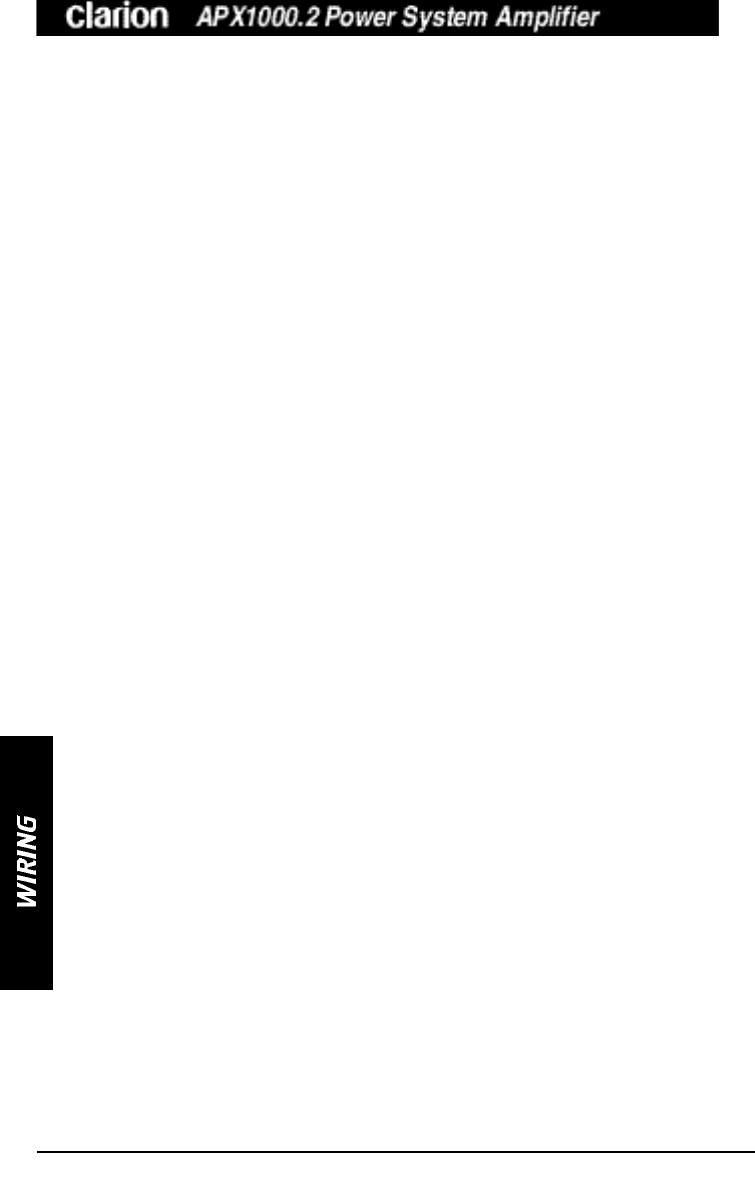
5. Add an external fuse on the amplifier’s positive (+) power lead and connect
it as close as possible to the vehicle’s (+) battery terminal. Use a rating that
equals the total current consumption at full output of all amplifiers in the
system. Adding an external fuse will protect the electrical system from short
circuits that can cause a fire.
6. Refer to Figure 6 when making electrical connections. Connect the
amplifier’s positive (+) lead via a fuse directly to the positive (+) terminal on
the battery. Do not connect this wire to the car’s fuse panel. Use red-insulated
10-gauge (or larger) wire for the amplifier’s positive (+) power lead and the
same-gauge black-insulated wire for the ground.
7. When replacing the amplifier’s fuse, always use one having the same current
rating. Substituting a higher-rated fuse or a slow-blow type can result in serious
damage to the amplifier.
8. Never ground the speakers to the vehicle chassis or body.
9. Make sure that your vehicle’s electrical system (alternator, battery, etc.) is
capable of handling the additional load. If you are planning a multi-amplifier
system, you may need to add a second battery and possibly upgrade the
alternator with a higher-output rated model. Consult your authorized Clarion
dealer for recommendations.
10. To avoid noise problems, run the amplifier’s positive (+) power lead along
one side of the vehicle to the battery. Run the remote turn-on wire and RCA
audio cables down the center, and route the speaker wires along the remaining
side. If wires must cross, run them perpendicular to each other.
11. When creating passage holes for the power wire, use grommets to eliminate
any sharp edges created during drilling. This will protect the wire from being
nicked and causing a short circuit.
12. Extra cable can cause signal loss and act as an “antenna” for noise. Use
only high-quality RCA cables that are no longer than necessary to make a
direct connection with the source unit or equalizer.
10


















